…asks Reader Brad:
“You talk about VWs, Lancia, etc., all the time, but don’t seem to make much mention of what the Frogs created.”
..and then points me to this list.
Speaking frankly [sic], the Frog cars are a classic case of where Gummint stuck its greedy fingers where they didn’t belong, i.e. by levying a tax on horsepower — the lowest tax being on engines generating (from memory) less than 15hp. This meant that most passenger cars were perennially underpowered, despite the technological superiority that French car manufacturers had over most others in the world. Now add the recent development of adding yet another layer to the puissance fiscale (PF, or “power tax”) by incorporating a carbon dioxide emission multiplier:
PF = (CO₂/45) + (P/40)^1.6
where P is horsepower, and Frog cars are still underpowered except where they’re not, i.e. in rally-style cars or hot (and expensive) hatchbacks. The giant Citroën DS’s engine, for example, never generated more than 100hp so despite the DS having the smoothest ride of any car (before and since), it was a lumbering beast whose 0-60mph time was measured by calendar rather than stopwatch.
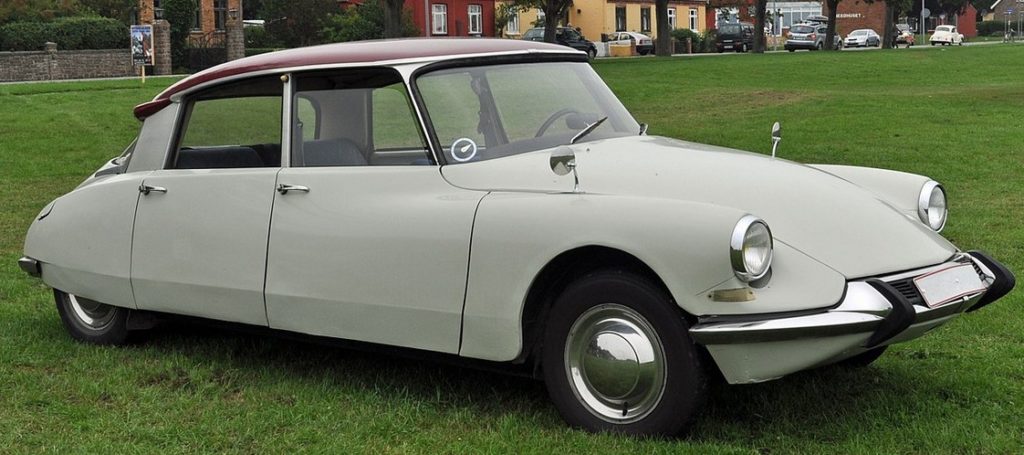
For the most part, too, outside the luxury cars like the DS, French fit and finish have always been crappy, and the non-use of vulcanized steel meant that in a country which has wet, damp weather much of the time, you can hear the car rusting when you turn off the engine. [some hyperbole there]
This does not mean that the French make lousy cars. When they are allowed to, they make absolute monsters, such as the Peugot Le Mans sports cars which were Audi’s only serious competitors at that race during the mid-2000s:

…or the Matra-Simca race cars which so dominated sports car races in the early 1970s:
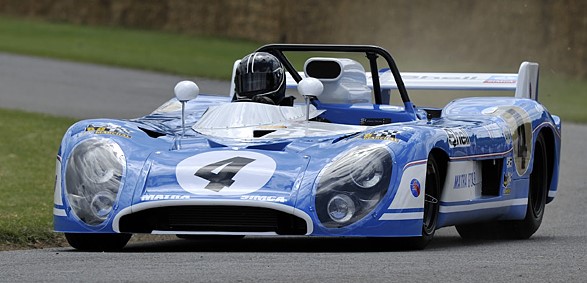
…or for that matter, the Renault F1 factory cars of the early 1980s:

…with their engines winning several drivers’ championshops for Williams (Nigel Mansell, Alain Prost etc.) in the early 1990s.
So what about the passenger cars? Looking at the list above, there’s probably only one I’d take, the Venturi Atlantique 400 GT:
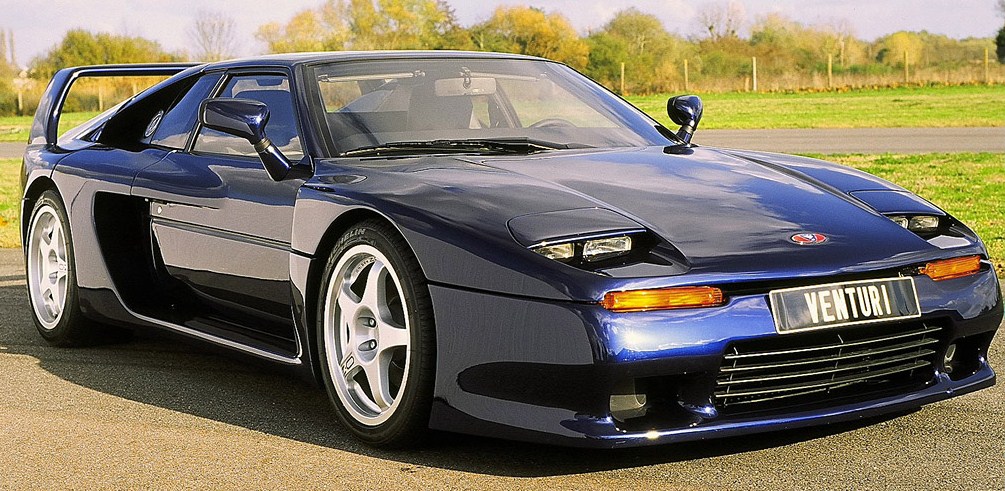
…because of its wonderful 1980s styling. (Reader Brad lusts after the 1930s Delahaye 135MS, even though that long bonnet hides a 3.3-liter engine which produces only 110hp, i.e. <10 PF units):
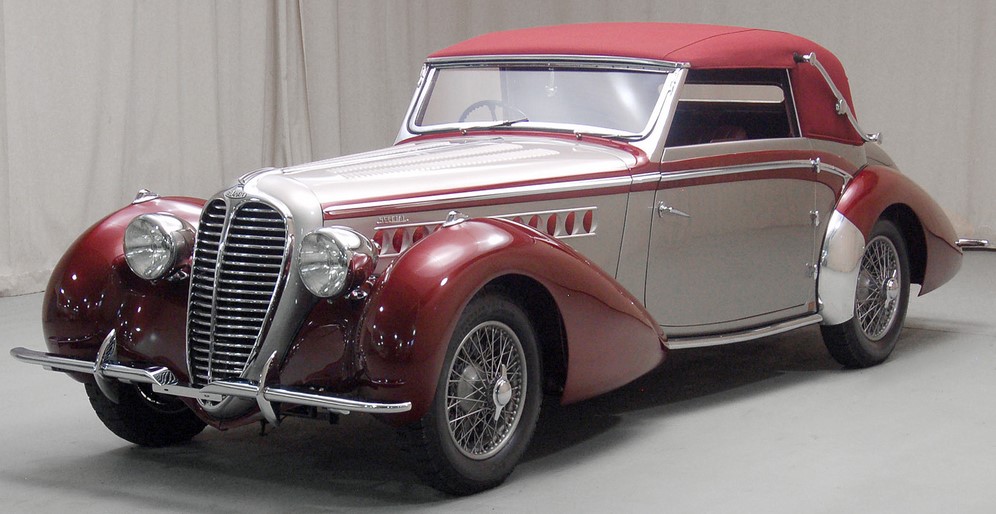
However, my favorite French car of all time is the wonderfully old-fashioned Citroën Traction Avant:
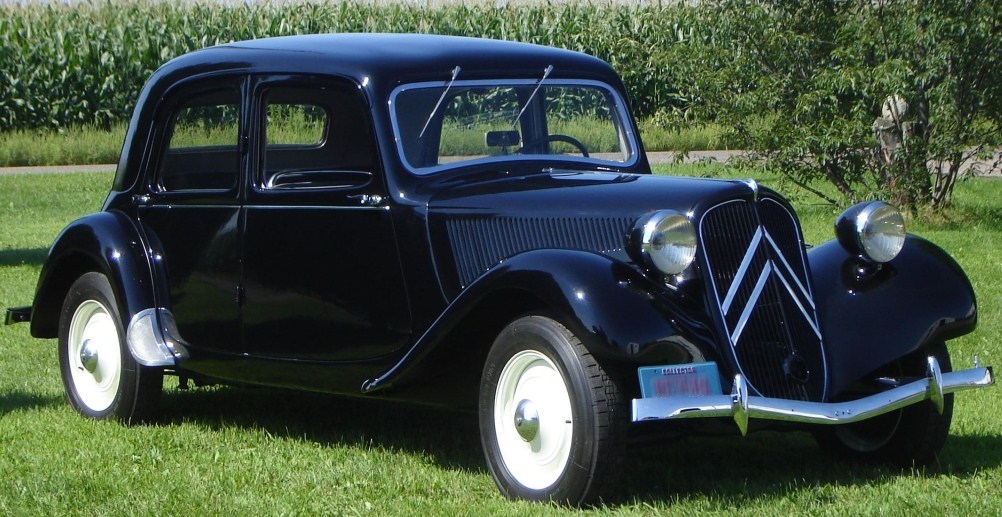
Because if I’m going to drive around in an underpowered Frog passenger car (1900cc, 56hp, <4 CF units), I’ll take style and comfort as the benefits, thank you. And put up with the water leaking into the passenger compartment every time it rains — in true Gallic fashion, Citroën never fixed that problem, after making the TA for nearly a quarter of a century.
This car, by the way, is still the hands-down favorite choice in France as a bridal car.
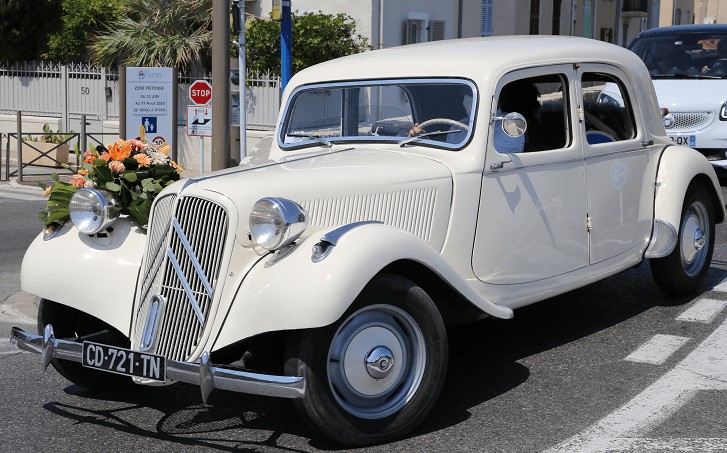

Quite timely.. The Grand Tour “Carnage A Trois” (where they critiqued French cars) just debuted last month.
Back in the early 60s my dad owned a money pit Renault Dauphine. He bought it based on price alone as the local dealer advertised “French styling and comfort” for about $25 less than a VW bug. Swing axles, recycled tin can body panels, and control knobs and levers that broke off in cold (under 50 degree) weather. I was too young to drive so I can’t speak about the performance and handing of the car, but its fit and finish was a couple of steps below vile. I did learn quite a few new words in that car, especially when my deep water Baptist mother wasn’t around. The only car I experienced that ranked below the Renault was a Subaru 360. I actually test drove one in 1971. The early Subies rusted in the warm and dry show room. Both were proof that you get what you pay for.
> Gummint stuck its greedy fingers where they didn’t belong,
> i.e. by levying a tax on horsepower
The obvious response (at least to my American Sensibilities) is to build a monster of an engine with a highly restrictive carburetor, and then have a separate company that sells “replacement parts” that include the appropriate go fast bits.
You know, like Holley and Weber.
Wait, hold the presses, you forgot the Deux Cheveaux, the 2CV, affectionately called Die Ente in Germany where it achieved cult status.
-https://www.youtube.com/watch?v=TRMDoFSXZQ8
-https://www.amazon.com/Citro%C3%ABn-2CV-Die-Ente/dp/3768826015
My German cousins ran theirs right through the 1980s and claimed to love them.
Die Ente means “the duck”, as in quack, quack, and I have no idea why they called it that. Deux Cheveaux means two horses as in 2 horsepower but it had more than that, a bit anyway.
My cousin Rita used to act as ferry woman with her Duck, carting us home from the Kneipen. Good times.
We had our first Citroen in 1957, which was like having a spaceship compared to the rest of the automobiles. Front wheel drive, front disc brakes, hydropneumatic suspension, steering, brakes and transmission control with radial tires made American and European cars look pretty crude. (Asian cars were not seen here in 1957 that I can recall). And you are right, no automobile made before or since rides as smoothly. Yes, rust was a problem, and of course you meant galvanized, not vulcanized body panels and rust would affect the hydraulic lines as well as the sheet metal. We had three more as station wagons through the years. They were wonderful cars.
I would love a modernized one with a real engine and good body panels.
If you mean ” high end ” cars you are absolutely right.
But when it comes to small utilitarian cars well suited to euro roads it is another story.
The 2 CV for instance is still loved by those who used to drive them.
Myself I did drive two Peugeot 205 and for the use I had of them they were perfect, and the 207 that I use now is excellent also.
The Italians I worked with referred to the Citroën DS as “una machina stronza,” or “a turd car.”
Pretty good description just looking at one.
My folks got an ‘85 Peugeot 505 sedan when they still did the Euro delivery thing… Pretty basic model but it was a comfortable car to motor in. Yes, it was an orphan after ‘91, but they had a trustworthy mechanic who kept it dependable. They had no complaints!
Two Words: FACEL VEGA!
Being built in Alsace-Lorraine, in the town of Molsheim, I’ll take a Bugatti over any other as my favorite French car.